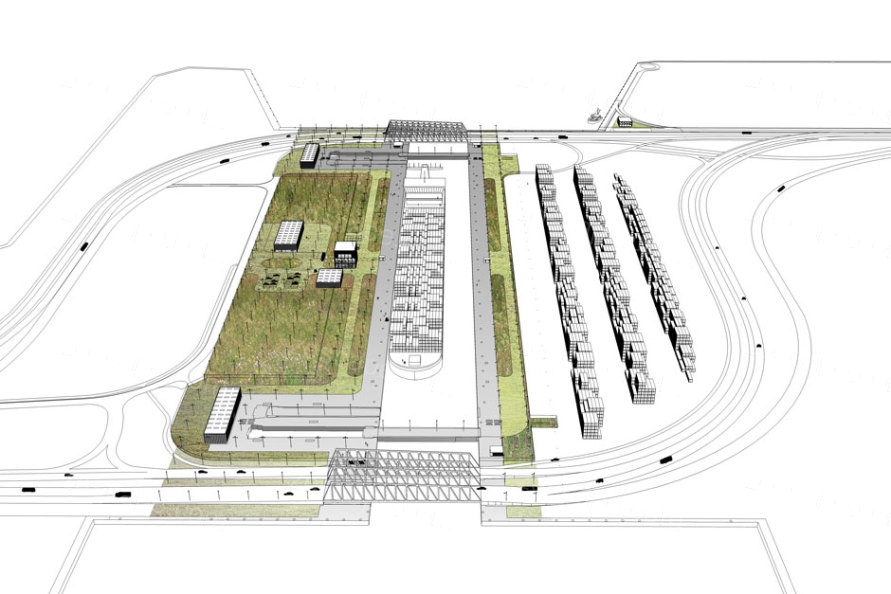-
码头公共滨水景观建筑设计码头公共滨水景观建筑设计

-
码头公共滨水景观建筑设计码头公共滨水景观建筑设计

-
码头公共滨水景观建筑设计码头公共滨水景观建筑设计

-
码头公共滨水景观建筑设计码头公共滨水景观建筑设计

-
码头公共滨水景观建筑设计码头公共滨水景观建筑设计

-
码头公共滨水景观建筑设计码头公共滨水景观建筑设计

-
码头公共滨水景观建筑设计码头公共滨水景观建筑设计

-
码头公共滨水景观建筑设计码头公共滨水景观建筑设计

-
码头公共滨水景观建筑设计码头公共滨水景观建筑设计

 组图打开中,请稍候......
7 ^' r6 Y) K4 {Project Name:The Deurganckdok sluice 码头公共滨水景观建筑设计 Location:Antwerp harbour) n" K7 z" F' N& ~3 [/ m
Year:2012 - today2 `$ ?- w0 j( r% m6 Z
Program & size:operational buildings sluis and landscape design
# q4 W7 `5 a5 H8 K1 R' }, CDesign:in collaboration with Verne architecten
. t z4 E2 m0 \) f. Z+ iProject Type:The Deurganckdok sluice 工业遗址景观设计 河道综合整治 港口码头景观设计 滨海城市 Key words::waterfront area planning, regional development planning, planning, agricultural tourism, eco-park landscape planning and landscape planning and conservation, 滨水规划、滨水景观,公共空间,河道景观,生态修复, 码头 旧工业 港口码头的设计 滨海城市 历史文脉 港区港口景观设计 公共滨水景观 建筑设计 滨水景观,滨河公园,生态水系规划,旅游度假区规划,保护地规划,河岸规划,滨江公园景观规划设计 港口码头港口码头,公共滨水景观设计,港口景观,沿海景观设计 码头景观设计,港口景观,沿海景观设计,工业景观,景观设计 All photos :©Verne Text译:zoscape 图片由Verne design提供- 版权所有 |
1 ]* F& @5 X. `The Deurganckdok sluice 码头公共滨水景观建筑设计
& D) Y0 v3 y! B- X8 L0 t
1 K$ ~4 J8 q. m" m, h1 L/ v3 R
. q+ g* Q) M( j$ j 由于现代城市扩张建设,城市工业用地空间布局的改变,导致大量工业遗址的产生。如何运用景观设计手法,保留极具历史价值的城市工业遗迹,并开发、重组、改造、再利用,使之能够延续、更新城市活力空间,是研究The Deurganckdok sluice 城市可持续发展的重要课题。The Deurganckdok sluice 码头公共滨水景观建筑设计项目位于Antwerp harbour老港区。经历百年沧桑的Antwerp harbour老港区因航业发展,现已全部搬迁,原址将建成集商务、金融、娱乐、休闲、旅游观光为一体的大型滨海CBD商圈。 码头公共滨水景观建筑设计通过对大连湾老港区历史文脉的研读、自然气候条件的把握、场地现状的调研分析,景观设计师从规划和景观设计两个方面入手,有针对性的保留和改造了原有功能设施并创造新的码头景观带。港口码头的设计与传统的城市景观有很大的不同,港口码头受历史、经济、文化条件的限制,其发展是单一性的工业圈带,与城市内部人民的居住、文化等没有直接联系。新的港口开发了不同于城市内部却极具吸引力的港口空间,创造丰富的空间体验,从而吸引城市内部活力进驻港区。设计中,根据新规的道路系统和客流量、消费群体预估,将场地规划为四个主要功能区:邮轮中心、游艇码头、创意鱼市、滨海码头景观带。保留了原有港口客运服务功能,同时在四码头建立邮轮中心、客运大楼、邮轮广场。同时将码头运输轨道、铁路站场照明灯、运输火车、原有码头铺地等工业遗迹改造成为新的码头景观。根据The Deurganckdok sluice 特色渔业文化发展创意鱼市、海洋动物互动区;运用潮汐的气候特点,设计了听风、看风、观潮、亲潮的自然景观。景观设计师团队意在通过对旧工业港口物象元素的提取和改造,对自然条件的利用和人文景观的再塑造,创造滨海城市全新的活力空间、提高人民的生活品质,并从深层次唤起人们对于港口历史发展与城市繁荣关系的认知和保护,唤起人们对于自然和家园的热爱之情。The Deurganckdok sluice connects the River Schelde with the several Antwerp dockyards on the left Schelde dock. The sluice, with a length of 500 meter, will be the largest in the world. All activities on the sluice terrain are in service of the sluice. Control from the nautical command, the driving mechanism of the sluice doors, storage of spare parts and machinery, and waiting facilities for personnel are organised according to their functional logic, and designed in coherence with the industrial landscape. A monotone raster of anthracite concrete frames make the shell for the different programs and unify a total of eleven buildings as an architectural family. Pushed in monochrome cassettes of concrete-, ventilation raster-, and glass fillings facilitate the program. Rationalistic simplicity is refined predominantly with pragmatic articulations of the façade raster in place of the important entrances, and the nautical command centre. The anthracite colour makes the relative tiny sluice buildings disappear in the landscape. The extent of the sluice plateau is denoted by a grid of lighting masts. Besides functional lighting of the terrain, the light grid is also equipped with signal lights on different heights that translate the functioning of the sluice and it’s changing water levels in the entire terrain.
, e7 E& o5 n) T. J& u
码头公共滨水景观建筑设计码头公共滨水景观建筑设计

2 a0 a8 l4 T9 o( Z, e+ f
^, U( Y$ n2 h& \ B
5 \# p: a# e5 s i* }0 m+ R
|